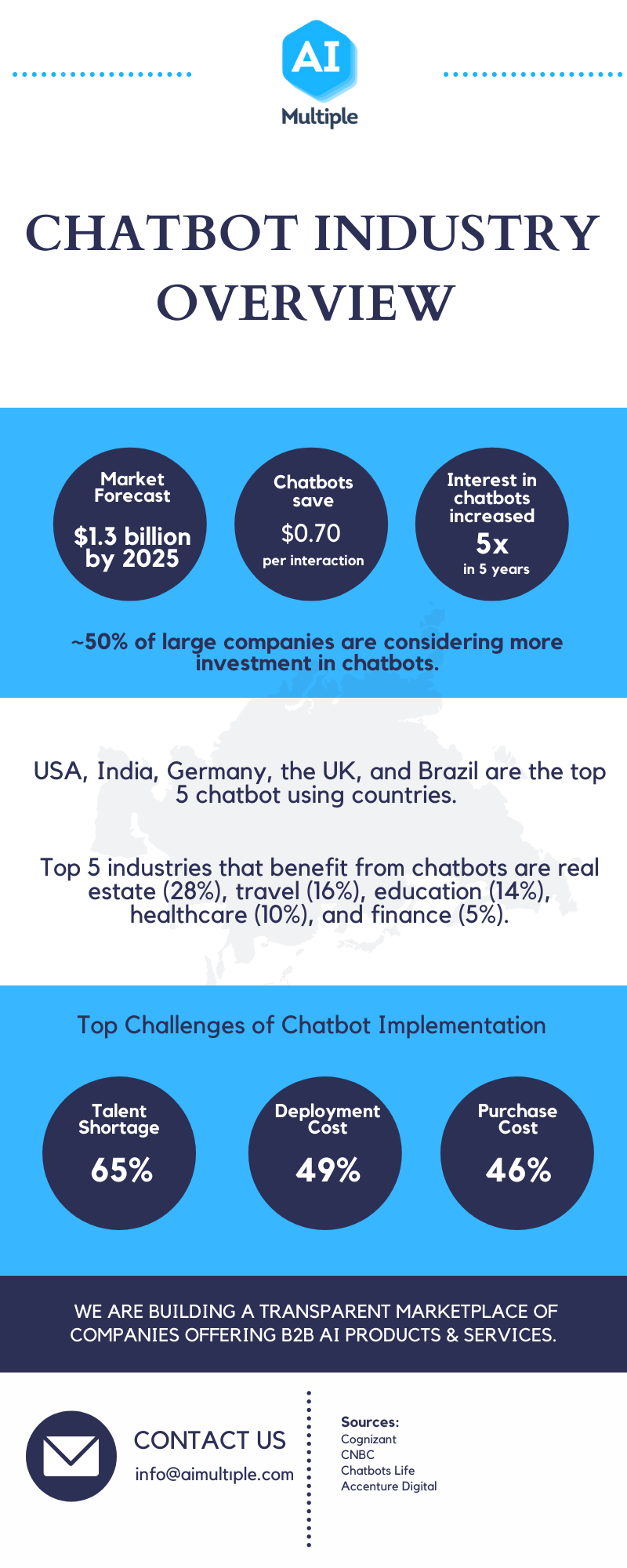Introduction
Welcome aboard! In the fast-paced world of business, it’s no surprise that things like Artificial Intelligence (AI) and chatbots have become the ‘talk of the town.’ In this post, I’m going to take you on a journey from chatbots to profits, exploring the fascinating world of AI in modern business.
Understanding AI and Chatbots
To start with, let’s demystify what we mean by AI and chatbots. At its core, AI refers to machines or programs that mimic human intelligence – thinking, learning, problem-solving, and so forth. Chatbots, on the other hand, are essentially AI-powered software designed to interact with humans in their natural languages. These chatbots are usually conversational agents programmed to communicate via text or audio methods. They are not just about fancy dialogues, they are reshaping how businesses operate and generate profits.
Current Scenario of AI in Business
Our current landscape paints a vivid picture of the role AI plays in business. From automating customer service through chatbots to helping with data analysis, AI is revolutionizing the business world. It’s creating value, increasing efficiency, and more so, providing enterprises with a competitive edge. Traditional business operations that were previously time-consuming are now being done within a fraction of the time and in a more accurate manner, thanks to AI.
But the most remarkable transformation revolves around chatbots. With their 24/7 availability and their capability to handle multiple customers simultaneously, they are reducing operational costs and driving profits. These profits seep through various aspects, such as improved customer service, increased sales, better engagement – the list is endless!
I hope this introduction has sparked your curiosity because we’re only scratching the surface. In the rest of this post, we will delve deeper into how you might leverage AI and chatbots for your business. Let the journey from chatbots to profits commence!
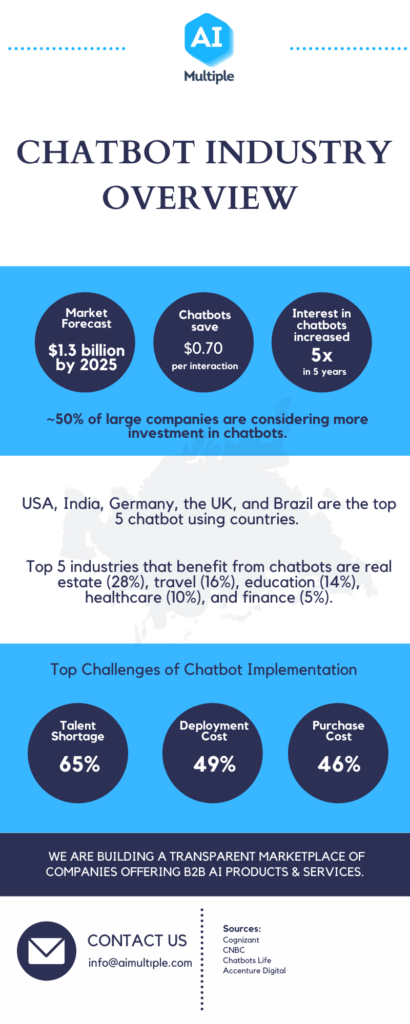
This image is property of research.aimultiple.com.
Evolution of AI in Business
It’s hard to ignore the impact AI has had on the modern business landscape. From basic automation to sophisticated AI, we’ve come a long way in how business processes are managed and executed.
A Brief History
Back in the day, businesses relied heavily on manual labor – in order to store data, perform calculations and to manage operations. But as our technology advanced, we witnessed the advent of automation. Automation was a game-changer, making tedious tasks easier and greatly reducing errors. But, in its early days, automation was quite basic and used mainly for repetitive tasks. This was only the beginning though.
From Basic Automation to Sophisticated AI
As technology evolved, so did automation. It eventually gave birth to sophisticated AI systems capable of performing tasks that were once thought impossible for machines. One of the prominent applications of AI in business is chatbots.
Today, chatbots are so advanced, they almost mimic human conversation. Businesses are using them to manage customer services, make reservations, provide information, and much more. The benefit of using chatbots is not only the accuracy and efficiency they bring but also, that they are available round the clock.
But wait, it doesn’t end there. AI and chatbots have now opened up new revenue streams for businesses. How, you may ask? Well, by offering personalized recommendations and upselling or cross-selling to customers. When AI-powered chatbots use customer data to make accurate product recommendations, it results in increased sales and profits. This is truly a testament to the powerful impact AI has had and continues to have on business.
This transformation in business brought about by AI is truly remarkable, and this is just the beginning. As technology continues to evolve, we can only imagine what the future holds for AI in the world of business.
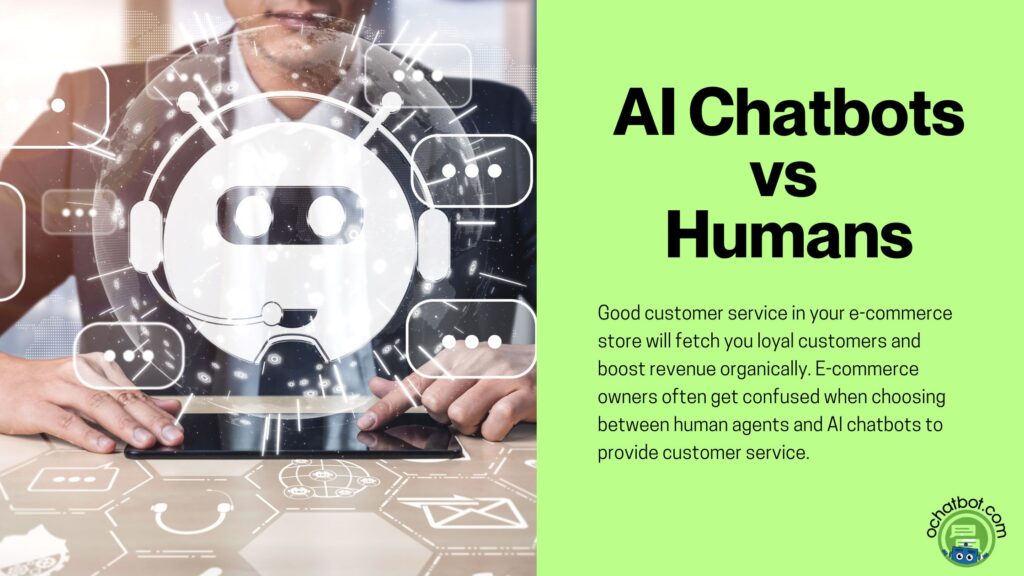
This image is property of www.ometrics.com.
Role of Chatbots in Modern Business
Chatbots are revolutionizing the landscape of modern business in several significant ways. These digital assistants powered by artificial intelligence are fast, efficient, and versatile, offering potential advantages in customer service, business operations, and sales and marketing.
Transforming customer service
Chatbots are transforming the customer service experience. Acting as online customer service representatives, they can answer common queries and assist customers around the clock. This 24/7 service ability allows businesses to cater to customers in various time zones, enhancing overall customer satisfaction. Furthermore, with AI’s machine learning capability, chatbots can continually learn from customer interactions, thereby improving their ability to provide effective service.
Enhancing business operations
As AI-powered tools, chatbots are reshaping business operations. They can automate repetitive tasks, reducing the likelihood of human errors and freeing up time for employees to focus on more complex tasks. By implementing chatbots, businesses can increase efficiency, productivity, and accuracy in their operations.
Streamlining sales and marketing
The influence of chatbots extends into the realm of sales and marketing as well. Through interacting with customers, these AI tools can gather valuable data that can be used to tailor marketing campaigns, making them more effective and personalized. In addition, chatbots can also help in product recommendations based on customer preferences, leading to increased sales.
Incorporating chatbots into modern business benefits multiple sectors. They enhance customer service, streamline processes, and boost sales, directly contributing to a company’s bottom line. The integration of chatbots can result in significant returns on investment, making it a strategy that every forward-thinking business should consider.
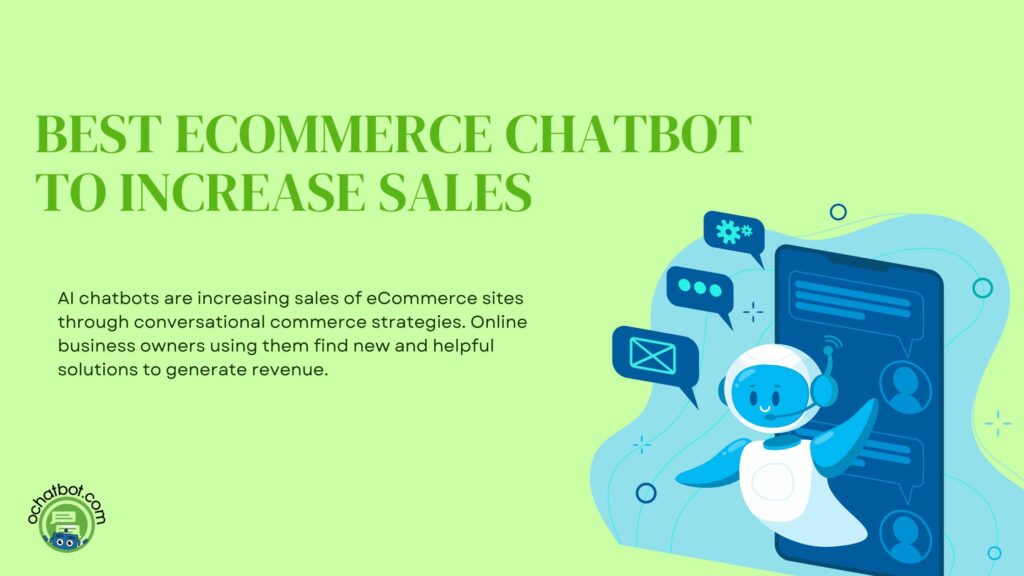
This image is property of ochatbot.com.
Communicating through AI: Chatbots
As we move deeper into the digital era, the way businesses communicate and interact with their clients is undergoing a radical transformation. At the forefront of this transformation is Artificial Intelligence (AI) with chatbots playing a pivotal role.
Conceptualizing Chatbots
Chatbots, essentially, are AI-powered programs designed to interact with humans in their natural languages. These interactions typically happen via a chat interface on websites, mobile apps or through social media platforms. The beauty of chatbots lies in their ability to simulate human conversation and automate a range of tasks – from simple FAQs to intricate business operations. As such, these “virtual assistants” not only help businesses save time and cost but also empower them to deliver a more personalized and seamless customer experience – hence triggering the journey “from chatbots to profits”.
Varieties of Chatbots
Broadly speaking, chatbots can be categorized into two types – Rule-based and Self-learning. Rule-based chatbots follow pre-determined rules and are suitable for handling simple, straightforward tasks. They can be useful for businesses that do regular transactions involving less complexity. On the other hand, self-learning chatbots use Machine Learning (ML) and Natural Language Processing (NLP) to learn from past interactions and constantly evolve in their responses. Such chatbots are ideal for businesses that deal with more complex tasks and wish to offer a more dynamic sort of customer interaction.
Leveraging the power of AI through chatbots exactly aligns with the modern business necessity of efficient, 24/7 customer service. With smart integrations and strategic approach, chatbots can essentially become a revenue generation engine, propelling the shift “from chatbots to profits” – serving as a testament to the colossal potential of AI in modern business.
Monetizing AI in Business
When we think about Artificial Intelligence (AI), it often seems like something out of a sci-fi movie. However, AI technology, especially in the form of chatbots, has become an integral part of business today. It’s no longer a vision of the future – it’s right here, right now, and businesses worldwide are monetizing it to boost their profits.
Now you might be wondering, how exactly can a chatbot bring business growth? Let’s dive into it.
Boosting Sales
When it comes to e-commerce, a large portion of sales are lost due to abandoned carts or unclear product information. Often, customers simply need a quick answer to a question to nudge them towards making a purchase. With the help of AI-powered chatbots, you don’t need a sales rep sitting at a desk to assist them. Instead, chatbots respond instantly, clearing any doubts or concerns the customer may have, leading to increased sales. Additionally, chatbots can gather data and provide personal shopping advice for users, creating a fantastic personalized experience that brings in more revenue in the long run.
Optimization of procedures and costs
AI chatbots aren’t just for boosting sales; they are also being used for procedure optimization. AI can be used to automate repetitive tasks, reducing manual efforts and operational costs significantly. Chatbots can handle queries, provide recommendations, schedule appointments, and more, improving services whilst lowering labour costs.
To wrap this up: Don’t see AI and specifically chatbots just as techy add-ons for your business. They are revenue boosting tools that could significantly improve your business process and increase profits. Ready to take your business to the next level? Make space for AI – it’s your profitable future knocking at your door!
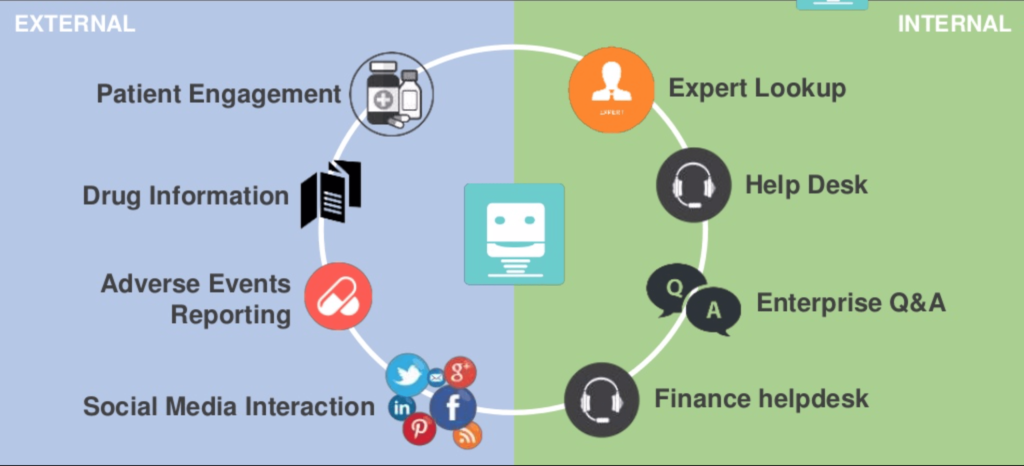
This image is property of research.aimultiple.com.
Sector-wise Impact of AI and Chatbots
The advent of AI and chatbots has revolutionized various sectors of modern business. In a world where quick responses and precise solutions are highly valued, AI and chatbots offer scalability, cost-efficiency, and improved customer experience. Through this post, we’ll delve a little deeper into how AI and chatbots have made a significant impact on retail, healthcare, and banking and finance sectors.
AI in retail
Retail, being a customer-centric sector, has always been ripe for technological disruption. With AI and chatbots, retailers are now able to provide a 24/7 personalized shopping experience to their customers. Chatbots, programmed to understand and respond to customer queries, can guide customers through the entire purchasing journey—from product selection to checkout. On the other hand, AI-driven predictive analytics help retailers in inventory management and strategizing sales tactics, ensuring a steady flow of profits.
AI in healthcare
In the healthcare sector, AI and chatbots present exciting opportunities for both, patient care and administrative tasks. For instance, AI-powered chatbots can provide immediate responses to patients’ health-related queries, schedule appointments, or send medication reminders. While AI algorithms can analyze medical data to predict diseases, aiding in the early detection and treatment of various health conditions.
AI in banking and finance
AI and chatbots have significantly revamped operation models in the banking and finance sector. Chatbots are transforming customer service with instant responses to queries on account balance, transaction history, etc. Meanwhile, AI’s predictive analysis capabilities allow banks to assess credit risks and detect fraudulent activities accurately, ensuring the smooth flow of operations and client trust.
Thus, AI and chatbots are pioneering a new age in business where increased efficiency, faster service, and enhanced customer engagement lead the way to higher profits.
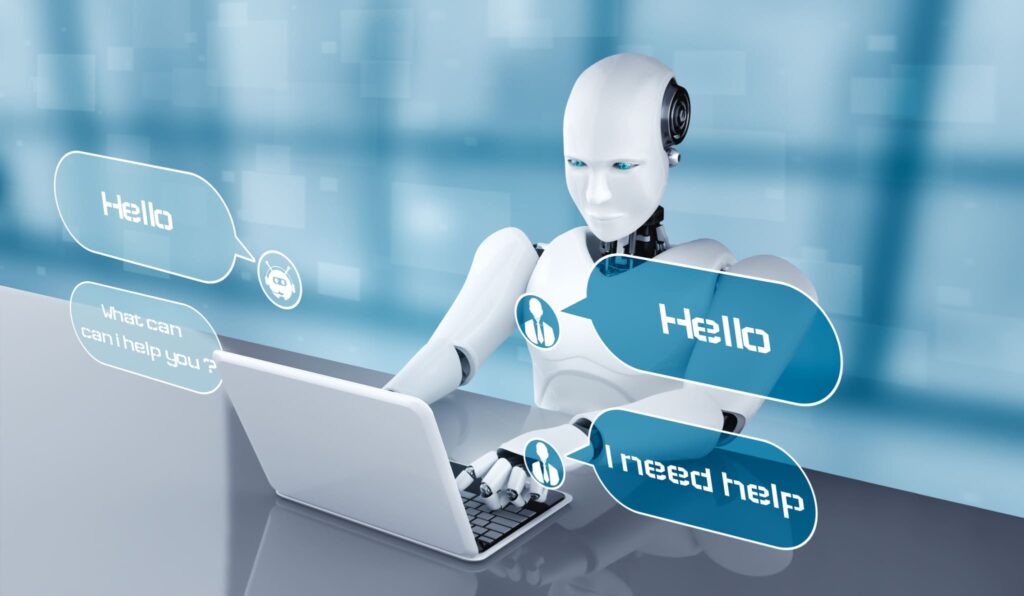
This image is property of www.ringcentral.com.
Success Stories: Companies Excelling with AI
The emergence of artificial intelligence (AI) has created an exciting new dimension to how businesses operate and generate profits. Incorporating AI is no longer a future concept, but a current reality, showcased by the success of companies like Amazon and Starbucks.
Case Study: Amazon
Amazon, the global e-commerce giant, is a shining example of leveraging AI for business growth and customer satisfaction. Using AI, Amazon analyzes customer behavior, purchase history, items in the wish list, and clicked products, leading to extremely personalized shopping experiences for each customer. This level of customization not only improves the customer experience but also directly influences buying decisions, boosting Amazon’s sales and profits. Moreover, Alexa, Amazon’s voice-activated assistant is another testament to the successful incorporation of AI, providing real-time and hands-free support to consumers.
Case Study: Starbucks
Starbucks, a multinational coffeehouse chain, uses AI to better connect with its customers and enhance their in-store experiences, and the results are impressive indeed. Through its AI-powered app, “My Starbucks Barista,” customers can place their orders via voice command or messaging interface. The company also uses predictive analytics to suggest personalized food and drink recommendations based on customers’ previous orders, weather conditions, and time of day. This AI-driven personalization strategy has indeed borne fruit, yielding increased customer loyalty and, of course, the company’s bottom line.
These success stories clearly depict that the power of AI extends beyond chatbots and into profit maximization. Businesses that can effectively harness this cutting-edge technology are likely to see enhanced customer engagement, more robust sales figures, and sustainable growth.
Potential Challenges and Risks
As we delve into the exciting world of AI and chatbots transforming our business cosmos, it’s equally crucial to acknowledge some potential challenges and risks this new technology presents.
Data Privacy and Security
Firstly, data privacy and security. Chatbots collect and process a formidable amount of data, which if not handled cautiously, could lead to significant privacy and security concerns. Businesses need to ensure they comply with global data privacy regulations like GDPR and understand the implications of mishandling user data. A cyber-breach can provoke not just financial loss, but a serious erosion of customer trust, which can directly jeopardize the brand’s reputation.
Integration Issues
Secondly, there are integration issues to consider. To be truly effective, chatbots need to interact seamlessly with other business tools like CRM systems, sales databases, and even social media platforms. However, tech compatibility can often pose a challenge. If there’s a disconnect between your chatbot and an existing system, you might end up with non-aligned data pools, causing inefficient operations or incorrect output.
Customer Acceptance
Finally, no matter how sophisticated the technology, its success ultimately hinges on customer acceptance. While younger generations might be more adaptable and enthusiastic to engage with AI, a prevailing proportion of consumers could be skeptics, preferring interaction with human personnel. It is vital for businesses to gauge their customer’s comfort level and willingness to interact with chatbots before making a full-fledged adoption.
As we explore the uncharted territories of AI in modern business, it’s prudent to weigh these hurdles and devise strategies to circumvent them – because at the end of the day, the goal isn’t just to make our businesses more tech-savvy, but to make them more customer-centric and resilient. Remember, the journey from chatbots to profits requires not just innovative technology, but also an acute understanding of its inherent challenges and risks.
Future Prospects: AI and Chatbots
With the increasing shift towards online transactions and customer interaction, AI and chatbots have found a central focal point in modern business. Through their ability to streamline operations, provide personalized customer service, and adapt according to various tasks, these technologies are ensuring a smooth transition from traditional models to technologically advanced processes.
Enhanced personalization
Using AI algorithms and machine learning, chatbots are capable of providing highly personalized experiences to customers. They are able to analyze historical data, understand customer preferences, and respond with tailored solutions and recommendations. This ability to personalize the interaction not only increases customer satisfaction but significantly boosts sales and leads to increased profitability.
Voice-activated AI
The rise of voice-assistants like Siri, Alexa, and Google Assistant has opened an entirely new spectrum of AI in business. There is a wealth of potential within this realm. By integrating voice-activated AI into their business models, companies can provide even more seamless and hands-free experiences. For instance, customers can place orders, inquire about their delivery status, or get immediate responses to their questions through voice commands.
Adaptive AI in business
One of the most promising aspects of AI in business is its adaptability. It learns from its past behaviors, gathers data from its surroundings, and evolves to become more efficient. This continual learning ability can help businesses predict future trends, stay ahead of the curve, and even identify potential risks.
In essence, the potential profits from integrating AI and chatbots in modern business are boundless. As we continue to push the boundaries of these technologies, businesses can look forward to even more advanced and profitable functionalities.
Creating your Own AI Strategy
Whether we’re aware of it or not, Artificial Intelligence (AI) is becoming an essential part of our daily lives. In the business world, organizations are rapidly moving to provide smarter and seamless customer experiences with AI technology. Today, we’re all becoming familiar with AI tools like chatbots, but in reality, AI offers so much more to boost revenue and profits. The key to success lies in strategically implementing AI in your business operations. So where do you begin? Here’s a rundown on how you can craft your own AI strategy.
Identifying opportunities
Firstly, it’s essential to identify the areas where AI can improve your business. One of the areas where businesses greatly benefit from AI is customer service. AI-powered chatbots are capable of handling multiple customer queries concurrently, providing quick and efficient responses. By automating repetitive tasks, AI can enhance the productivity of your workforce, giving them more time to focus on strategic tasks. Additionally, AI tools can be used to analyze customer behavior and preferences, thereby helping to create better marketing strategies.
Choosing the right tech
Once you’ve identified your needs, choosing the right AI technology for your business is crucial. Each tech stack comes with its own advantages, and your choice will depend on what you aim to achieve with AI. Consequently, it’s essential to conduct thorough research before settling on a particular technology. Also, it’s always a good idea to consult with experts, or team up with a tech partner who can guide you through the selection process.
Implementing AI in business
After having identified the opportunities and chosen the right tech, the final step would be implementing AI strategically into your business. This includes integrating the AI systems with your existing tech infrastructure, training your team to use it, and continuously optimizing your AI strategy for maximum efficiency. Remember, AI is not a one size fits all solution. Therefore, adapting it to your unique business needs and continuously monitoring its performance would play a key role in driving your business growth.
By following this roadmap, you can create your own AI strategy that will guide your business transformation smoothly and efficiently. You stand to enjoy the unique benefits of AI, from transforming your chatbots to ringing in profits.
Key Takeaways for Businesses
In our modern landscape, businesses are increasingly adopting AI (Artificial Intelligence) to streamline their operations and improve customer service. Let’s discuss some key takeaways to make the most of these opportunities.
Championing customer experience
The first and foremost strategy is fostering customer experience. Chatbots, AI-powered tools, can instantly answer customer queries, saving their precious time and keeping them satisfied. I can’t emphasize enough on this – customer experience is the new battlefield! When effectively deployed, chatbots can significantly enhance your customer service, leading to increased brand loyalty and, ultimately, higher profits.
Invest in innovation
In the 21st century, businesses who fail to innovate deserve their fate – extinction! It might sound harsh, but it’s the reality. AI offers a plethora of opportunities to innovate. From machine learning to predictive analysis, there’s a whole new world to explore. And with potential comes profits! If businesses invest wisely in AI and streamline their processes, they can skyrocket their efficiency and productivity.
Embrace change
Change is the only constant in life – and business is no exception. Companies can no longer afford to be comfortable with the status quo. They must embrace AI and its implications wholeheartedly, even though it might seem daunting initially. Those who adapt will flourish, and those who resist will perish. AI is here to stay, and it’s high time that businesses understand this. It might involve risk, but remember, no risk, no reward!
Incorporating AI into your business strategy can provide lucrative gains in the long run. By championing customer experience, investing in innovation, and embracing change, businesses can pave their way to success in today’s AI-driven world.
Conclusion
In today’s digital age, intelligent technologies are key to driving advancement and innovation. Progressively, businesses are capitalizing on Artificial Intelligence (AI) to enhance customer experiences, automate processes, and increase profits. Chatbots have become a primary example of AI’s potential to monetize online business value.
AI: A business imperative
We cannot stress enough how vital AI and chatbots have become in the contemporary business landscape. Whether it is customer service, sales, or operations, AI’s power to streamline processes and increase efficiency is unparalleled. With chatbots, businesses are not only able to automate routine tasks around-the-clock, they are able to personalize interactions, which makes a dramatic difference in customer satisfaction levels. Customized responses and instantaneous attention to the customer can contribute to significant profit margins.
Next steps for businesses
Adopting AI and more significantly, chatbots, must be a strategic decision. Therefore, the next step for businesses requires blending strategic vision with substantial investment in research and development related to AI. Pick a segment of your customer journey to pilot a chatbot, and measure how it impacts customer satisfaction and the bottom line. Once you start to see positive results, you can expand the use of chatbots to other areas of your business. Remember, however, that technological adoption must be accompanied by cultural and process changes within your organization.
In conclusion, harnessing the power of AI, particularly in the form of chatbots, can transform how businesses function and generate revenue. The journey from chatbots to profits may seem challenging, but it’s worth exploring for businesses that intend to thrive in the modern day.
